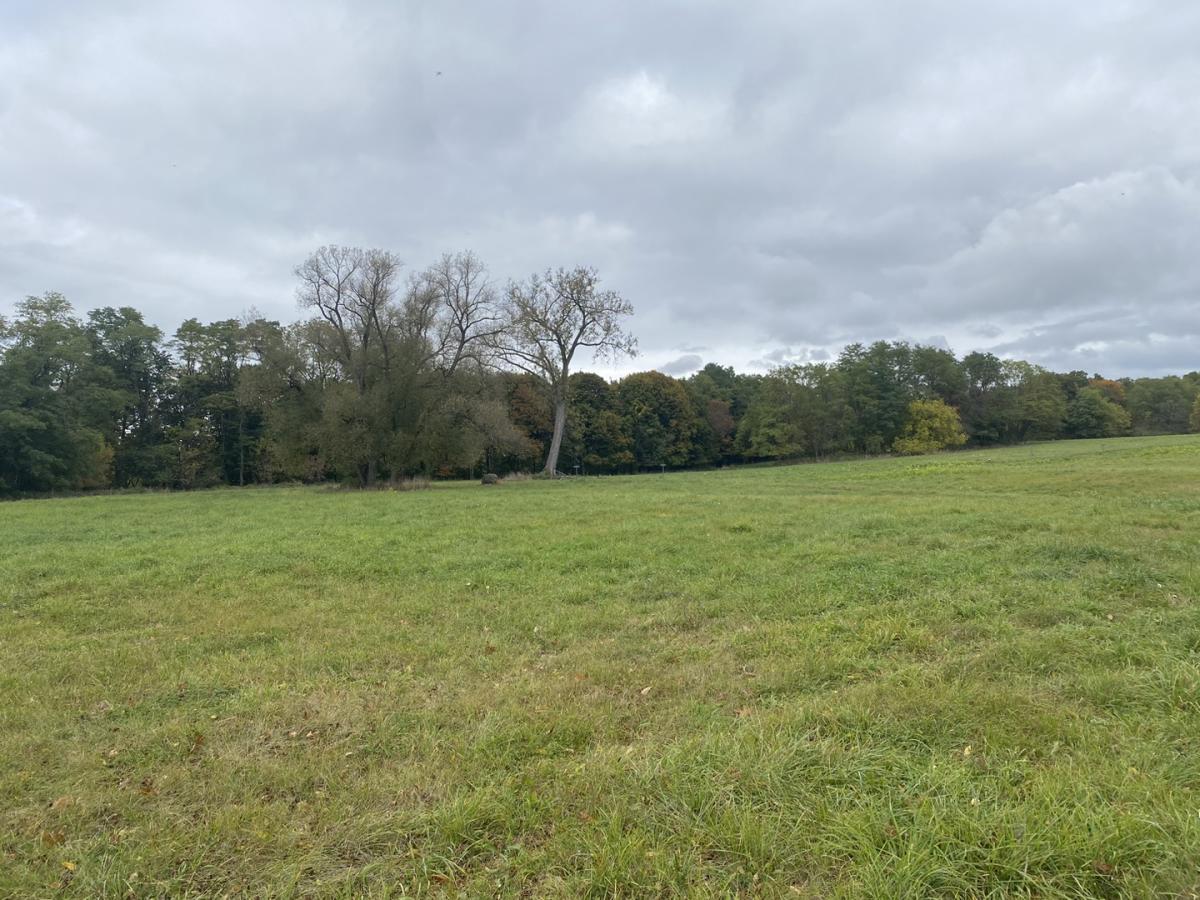The Willard Asylum for the Insane may sound spooky, but the once large and busy campus was home to thousands
The Willard Asylum for the Insane first opened its doors in 1969. It was renamed the Willard State Hospital in 1890, which is remained until 1974 when it was named Willard Psychiatric Center. In 1995 the campus closed, leaving Willard largely empty and the town with far less activity.
Today the county is working to determine what the best move would be to make use of the former Willard campus, but the thousands of patients who came to stay shouldn't be forgotten.
What was Willard?
Seneca County Historian Walter Gable created a document in 2018 that goes into great detail about the asylum's history, especially pertaining to the patients.
The first woman to arrive was Mary Rote on October 13, 1869. She was chained at the wrists upon her arrival, and had previously spent a decade confined and never wearing clothing. She was found crouched in the corner of her cell with nothing in the room with her, or on her, expect for a blanket. Once she arrived to Willard, she began to be dressed daily and hygiene habits improved.
Thousands more would join Mary in her arrival to Willard where it would then grow to be the largest insane asylum in the country.
Former employees of the facility have described the asylum as a very positive and happy place to be, cancelling out much of the idea that a now vacant insane asylum be a haunted, sad place where horrible things happened. Locals and former employees don't seem to feel that way.
Before asylums were created, many patients resided in what are referred to as "poorhouses" and they were kept chained, unclothed, and secluded. By creating these asylums, patients were able to get away from the cruelty, neglect, punishment, and starvation that often faced in poorhouses and even at home with their families.
Laws were passed that would help protect those deemed "insane" or with disabilities, and establishing these hospitals would help them get better treatment than they had been getting.
After these laws were passed and Willard was created, they built the first main building which would later be known as Chapin House.
Mary Rote was the first patient to arrive, but she was not the only one to arrive on October 13 1869. Three more men arrived that day, Alonzo Hopkins, Abram Lewis, and John Page.
These patients names aren't available through records from Willard and New York State, but they're available through the 1870 U.S. Census.
Many of the first patients arrived by boat and would have their chains removed right on the dock. They would receive a bath, clothes, be fed, get examined, and be fully admitted as patients. Those that were able to work were encouraged to do so, which helped with the costs the hospital had.
As the number of patients increased, the hospital expanded by adding more buildings, and became one of the first cottage style hospitals out there. The Chapin House was the first house there, then a building for women was opened called Grandview, referencing the grand view of Seneca Lake. Other structures built and spread across the campus included houses called Pines, Maples, Sunnycroft, Edgemere, and Hermitage. Of the 929 acres that made up Willard, the campus had kitchens, bakeries, boiler houses, an amusement hall, a machine shop, gas works, a locomotive house, a horse barn, two ice houses, a paint shop, a vegetable cellar. a slaughterhouse, two piggeries, two cow barns, a propagating house, two pump houses, a coal house, a hotel building with a barn and lake dock, a store house and railroad equipment. All of these things were built by 1885, including a 30 plot cemetery.
Patients were treated with kindness and taken care of while being protected. They were urged to work if they were willing and able, but not forced.
Patients were entertained and there were multiple buildings used throughout the time Willard was open to keep them busy. They had auditoriums, showed movies, had a stage, and sports teams were created. As time went on, trips were organized for patients to be able to leave and go do things. They could visit Roseland Amusement Park, Finger Lakes Racetrack, and other local sports games.
 Photograph of Hadley Hall, Preservation League of NYS
Photograph of Hadley Hall, Preservation League of NYS
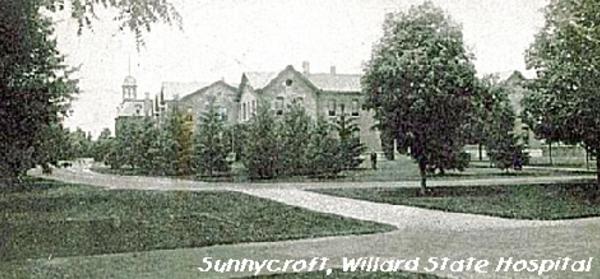
Photograph of Sunnycroft, Roots Web
The campus wasn't just the home to patients
As the campus grew, they changed the ways things operated to better suit the needs of the patients and hospital. Employment rates fluctuated during times of war and illness, and by 1884 they had hired night attendants to sleep in their own rooms for patients that had "filthy habits."
In 1890 a training school for nurses was created on campus and two decades later they built the Nurses House. The hotel by the lake was redone for married employee housing.
Illness spread rapidly during the early 1900s, and tuberculosis was the first disease to infect and kill many patients. Diphtheria also spread throughout the hospital, and even killed one of the doctors' children. Typhoid fever also made its rounds, leading to more infrastructure to better treat water on the campus. The influenza pandemic of 1918 and 1919 also spread through patients. 486 patients became infected and 90 of them died. It wasn't just the patients getting sick though, 177 hospital employees were infected with the flu and two staff members died.

Nurse with patients, Atlas Obscura
Various forms of treatment to try and heal patients of their mental illness
- Hydrotherapy in the form of Turkish baths
- Thyroid extraction
- Arsenicals for mental diseases relating to Syphilis
- Insulin shock treatment
- Metrazol
- Electric shock treatment
- Occupational therapy
- Musical treatment
- Physiotherapy
- Starting in 1955, prescription drugs were used
A hospital was finally built in 1931, but the morgue had been there since 1870
Up until this point, the Willard campus was a treatment facility for mental illness, not an actual functioning hospital. They decided to built an on-site hospital and created Elliot Hall. This was used as both the hospital and admissions offices.
This hospital had a new surgical wing, and operating suite, and many new safety features. In addition to the two operating rooms, there was a scrub area, a room for sterilization of autoclaves, a dark room for X-rays, a recovery room, a conference room, and other rooms. This hospital was used for surgeries into the early 80s with everything hospital related taking place there. Employee physicals, TB screening, and fingerprinting were all done there. There were even clinics and dental offices there. While much of the campus is not used anymore, Elliot Hall was used as a hospital until the 80s and then turned into a training facility and dorm for the Department of Corrections.
The morgue was built in 1870. 50,000 patients were admitted to Willard over its lifetime and half of them died while being patients. Many succumbed to TB. The morgue looks the same as it did when it closed in 1995. Coolers were placed inside from Sampson Air Force Base, and a light was in the window that would go out if temperatures began to rise. This let the night watch know it was happening. If it did, staff would need to get ice if there was a body in the morgue.
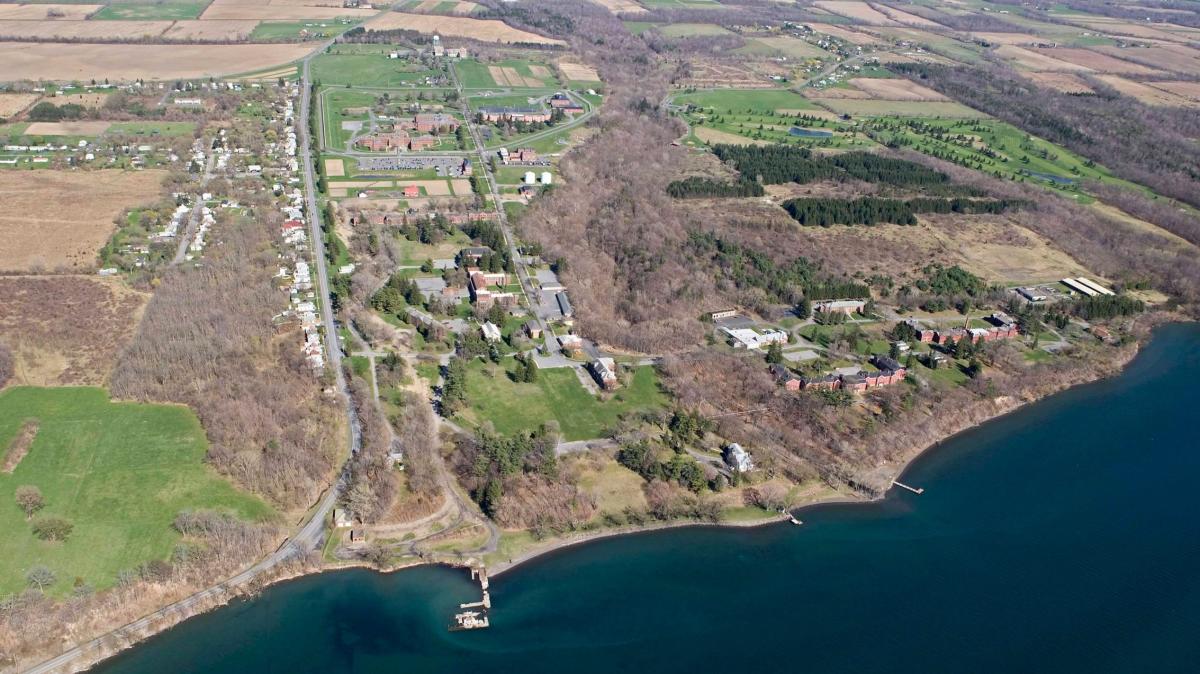 Preservation League of NYS
Preservation League of NYS
Efforts to close the hospital began after the 1960s
Despite all of the success and positivity that came out of Willard, many laws and budget cuts caused patients to be moved or transferred to other facilities, foster homes, or nursing homes. When the Willard Psychiatric Center finally closed, there were just 135 patients left.
In 1995, half of the Willard campus became the Willard Drug Treatment Campus, a division of the New York State Department of Corrections. Hatch, Birches, and Sunnycroft buildings were all fenced in. Within the mile long fence line were 110 acres of the former Willard campus, where non-violent inmates were kept in a three month program that would rehabilitate them using military style bootcamp. Some buildings were renovated for the staff of NYSDOCCS, while others were left neglected. The largest house, the Chapin House, was demolished in the 1980s.
5,776 patients are still on Willard's campus today in the cemetery
Across the street from the campus, there are 5,776 bodies of former Willard patients who's families never claimed them. The graves were once marked with metal numbers in the ground, but many have been removed in order to make mowing the grounds easier. Some still remain in an area with trees. There are sections throughout that recognize each religion including Catholics, Protestants, and those of Jewish faith. There are 38 Willard patients buried in the northeast corner of the cemetery that serviced in the Civil War.
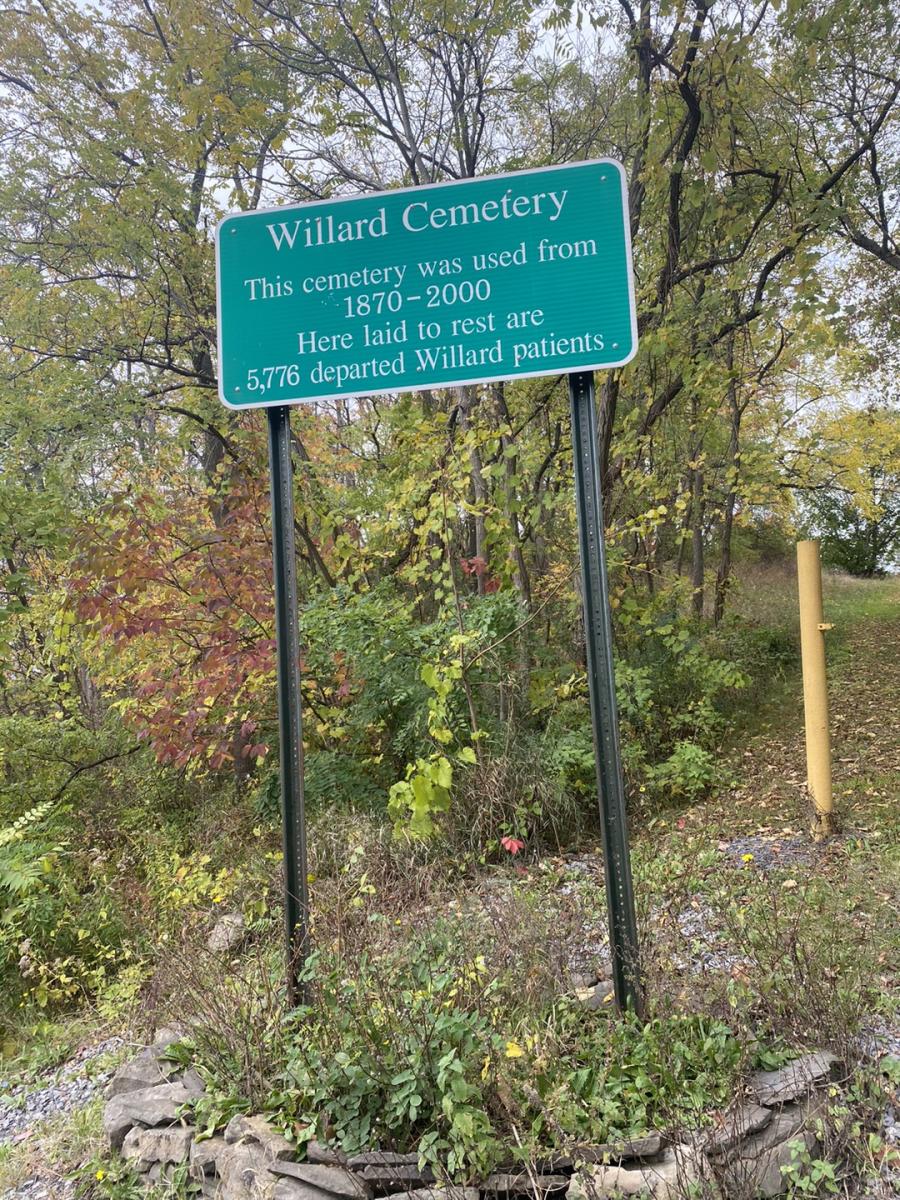
One of the most fascinating, and perhaps saddest, things to come out of Willard are the Willard Suitcases
In 1995 when the hospital closed, a staff member was given the task of salvaging things in all of the buildings. She unlocked an attic door in one of the buildings where she found more than 400 suitcases left behind by former patients who likely never left the facility. These suitcases were taken and placed into storage when a patient was admitted. These suitcases are all from between 1910 and 1960.
A book was later written called "The Lives They Left Behind" and it detailed ten of the former patients who had suitcases filled with their belongings in the attic.
Jon Crispin was able to photograph these suitcases and only shared the patients first names and first initial of their last name. He is one of very few people to see these items up close, and worked closely with others that were able to gain access to former patients medical records. Sadly, most of this information is kept hidden by the state due to state laws, and family members struggle to find their relatives that may be buried at Willard.
To view Crispin's series on the Willard Suitcases, click here.
The photos below are part of Crispin's collection:
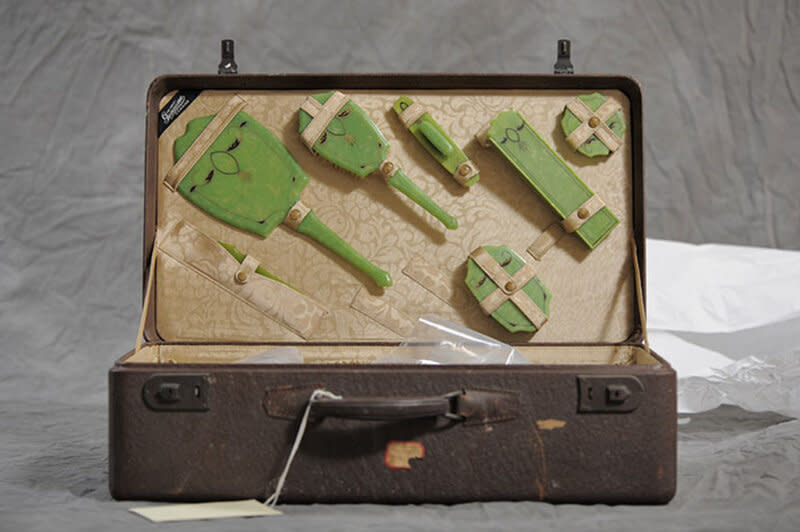
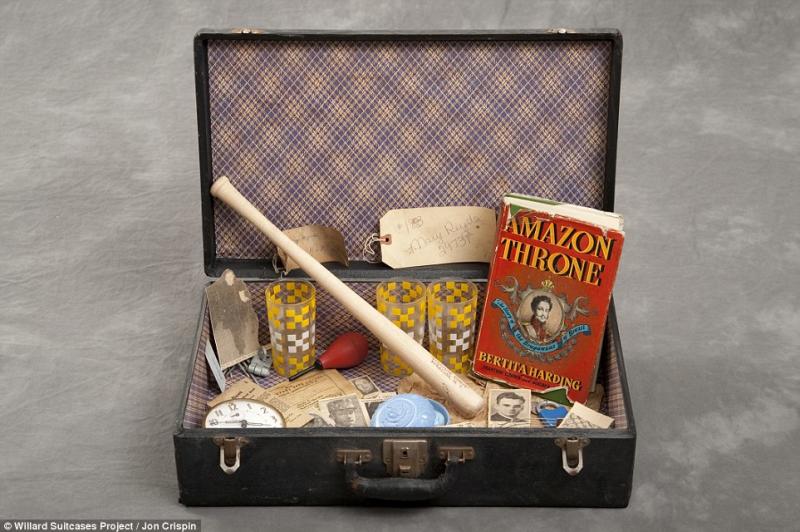
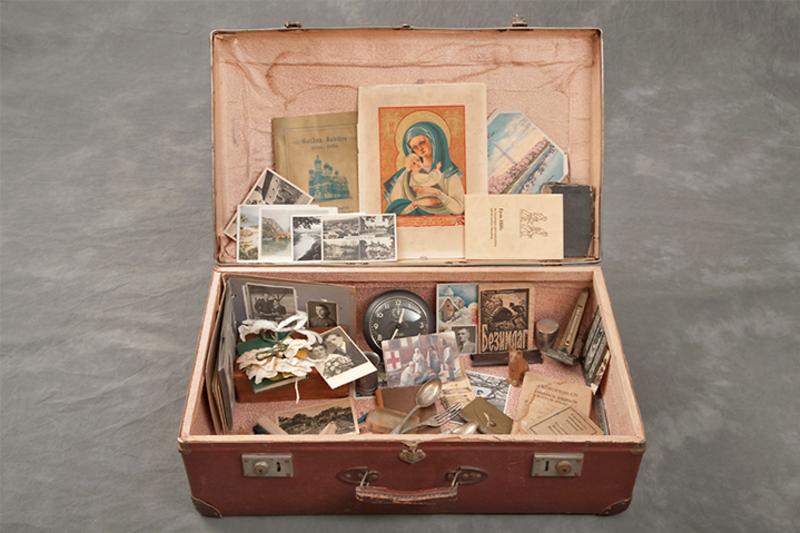
Interesting bits of information regarding Willard Asylum
The hospital opened in 1869, and on Oct. 31 there were 63 patients. By Nov. 1 there were 80, and by the end of the year on Dec. 31 there were 142 patients in all. 141 employees were there to oversee these patients at that time. The number of patients rapidly increased every year, and in 1934 the patient population reached almost 3,000. By 1950 there were over 1,000 employees running Willard campus. Despite many patients living out their life at the campus, there were some recovered discharges, improved discharges, and discharges made for patients that had not improved. Though not common, there were very few discharges of people that were deemed not insane.
The menu in 1879 is as follows:
Sunday:
Breakfast: Meat and potatoes, bread, coffee
Dinner: Cold meat, potatoes or beans, pickles or tomatoes, bread
Supper: Bread, butter, ginger bread, tea
Monday:
Breakfast: Stewed potatoes, meat stew, bread, coffee
Dinner: Pot pie, bread, vegetables
Supper: Bread, butter, cracked wheat, syrup, tea
Tuesday:
Breakfast: Meat and potatoes, bread, coffee
Dinner: Bean soup, boiled potatoes, boiled rice, bread
Supper: Bread, butter, rusk, tea
Wednesday:
Breakfast: Fried mush. bread, coffee
Dinner: Roast beef, vegetables, bread
Supper: Bread, butter, oat meal, syrup, tea
Thursday:
Breakfast: Fried potatoes, meat stew, bread, coffee
Dinner: Vegetable soup, boiled potatoes, rice, bread
Supper: Bread, butter, sweet cake, tea
Friday:
Breakfast: Meat and potatoes, bread, coffee
Dinner: Cod fish, bread pudding, pickles or tomatoes, boiled potatoes, bread
Supper: Bread, butter, corn meal mush, syrup, tea
Saturday:
Breakfast: Boiled potatoes, meat stew, bread, coffee
Dinner: Boiled beef, potatoes, pickles or tomatoes, bread
Supper: Bread, butter, tea, cheese
Whenever fruits or vegetables were available that were grown in the garden on the campus, those were added to the dinner table.
The menu in 1881 for the "established dietary" is as follows:
Sunday:
Breakfast: Hashed meat and potatoes, bread, coffee
Dinner: Cold meat, potatoes or beans, pickles or tomatoes, bread
Supper: Bread, butter, ginger bread, tea
Monday:
Breakfast: Stewed potatoes, meat stew, bread, coffee
Dinner: Pot pie, bread, vegetables
Supper: Bread, butter, cracked wheat, syrup, tea
Tuesday:
Breakfast: Hashed meat and potatoes, bread, coffee
Dinner: Bean soup, boiled potatoes, boiled rice, bread
Supper: Bread, butter, rusk, tea
Wednesday:
Breakfast: Fried mush, bread, coffee
Dinner: Roast beef, vegetables, bread
Supper: Bread, butter, oat meal, syrup, tea
Thursday:
Breakfast: Fried potatoes, meat stew, bread, coffee
Dinner: Vegetable soup, boiled potatoes, rice, bread
Supper: Bread, butter, sweet cake, tea
Friday:
Breakfast: Hashed meat and potatoes, bread, coffee
Dinner: Cod fish, bread pudding, pickles or tomatoes, boiled potatoes, bread
Supper: Bread, butter, corn meal mush, syrup, tea
Saturday:
Breakfast: Boiled potatoes, meat stew, bread, coffee
Dinner: Boiled beef, potatoes, pickles or tomatoes, bread
Supper: Bread, butter, tea, cheese
If there were other vegetables available, they could be substituted for pickles and tomatoes. Additional vegetables depending on the garden could be added. Cold meat was to be given to working patients for supper and fruit or sauce could be substituted for cracked wheat, oat meal, or corn meal mush. For men there could also be a substitution of fish for certain foods.
Diets were different for "Able Bodied Males" and there were two kinds: English Dietary and Scotch Dietary
English Dietary for able bodied males:
Daily Breakfast: 1 pint coffee, 6 ounces bread, 3/8 ounce butter
Dinner Sunday, Tuesday, Wednesday and Friday: 5 ounces cooked meat free from bone, 4 ounces bread, half pint beer, 12 ounces vegetables
Dinner Monday: 12 ounces meat and potato pie with crust, 2 ounces cooked meat, half pint beer
Dinner Thursday: 3 ounces cooked meat, 4 ounces bread, half pint beer, 8 ounces currant pudding, or in the summer fruit pie
Dinner Saturday: 1 pint soup, 6 ounces bread, half pint beer
Daily Supper: 6 ounces bread, 2 ounces cheese, half pint of beer or 1 pint of 6 ounces bread, 3/8 ounces butter.
Extras: Men working as ward helpers or in outdoor labor or trades get a half pint of beer in the afternoon along with 2 ounces of bread and a half ounce of cheese. At 4 p.m. they receive another half pint of beer. Those who are sick get whatever diet their medical superintendent sees fit.
Scotch Dietary for able bodied males:
Daily Breakfast: Porridge and milk or tea, bread and butter.
Dinner Monday: Broth and suet dumpling
Dinner Tuesday, Thursday, and Saturday: Broth and bread with meat and potatoes
Dinner Wednesday: Irish stew and meat or potato pie
Dinner Friday: Pea soup and bread, with fresh fish and potatoes
Dinner Sunday: Rice, milk, bread and cheese or rhubarb pie
Supper menu unavailable
What happened to the patients?
Numbers up until 1886 are provided in the document created by Walter Gable. A total of 3,964 patients were admitted to Willard; 1,897 males and 2,067 females. 145 patients were considered recovered from the opening of Willard until 1886, with 71 being male and 74 being female. 371 were considered improved; 168 males and 203 females. 317 were considered unimproved; 179 males and 138 females. Deaths were far greater, with a total of 1,307; 623 males and 684 females. The number of patients deemed not insane was far less, with a total of 6. 2 females and 4 males were considered to be sane after their admission to Willard Insane Asylum.
To date there are 5,776 patients buried in the cemetery across the road from the asylum.

